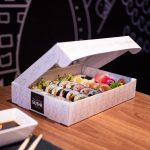Imagine unboxing your favorite meal, the aroma wafting through the air, and knowing that the packaging protecting your food is also protecting our planet. This isn’t a distant dream—it’s the reality being created by eco-friendly food packaging boxes that are revolutionizing how we consume and dispose of food containers. In an era where sustainability has become more than just a buzzword, these innovative packaging solutions are leading the charge toward a greener future.
The environmental impact of traditional food packaging is staggering. Conventional plastic containers and Styrofoam boxes can take centuries to decompose, leaching harmful chemicals into our soil and waterways while contributing to the massive plastic pollution crisis. Single-use packaging accounts for nearly 40% of all plastic produced globally, with much of it ending up in landfills or our oceans. The consequences are visible everywhere—from sea turtles trapped in plastic rings to microplastics found in our drinking water. The need for change has never been more urgent.
Enter eco-friendly food packaging boxes—the heroes of sustainable dining. These innovative containers are typically made from renewable, biodegradable, or compostable materials such as bamboo, sugarcane bagasse, mushroom roots, cornstarch, and recycled paper. Unlike their plastic counterparts, they break down naturally within months rather than centuries, returning to the earth without leaving toxic residues. The production process itself is often more energy-efficient, with many manufacturers using solar power and water-based inks to further reduce their environmental footprint.
What makes these sustainable boxes truly remarkable is their versatility and durability. Modern eco-packaging can handle everything from hot soups to cold salads without compromising structural integrity. Advances in material science have led to water-resistant coatings made from plant-based materials, ensuring that your food stays secure during transport. Many eco-friendly boxes are also microwave-safe and freezer-friendly, providing the same convenience as traditional packaging while being kinder to the environment.
The benefits extend beyond environmental protection. Businesses adopting green packaging often see improved brand perception and customer loyalty. A recent survey revealed that 73% of consumers are more likely to purchase from companies committed to environmental sustainability. Restaurants and food delivery services using eco-friendly packaging report increased customer satisfaction, with many patrons specifically choosing establishments that align with their environmental values. This shift represents a powerful intersection of ethical consumerism and business intelligence.
Innovation in this space continues to accelerate. Scientists are developing packaging made from seaweed that’s edible and packed with nutrients. Others are creating containers from agricultural waste that would otherwise be burned, contributing to air pollution. Some companies are even implementing ‘closed-loop’ systems where customers return packaging for cleaning and reuse. The possibilities are endless, and each innovation brings us closer to a circular economy where waste is designed out of the system entirely.
Making the switch to eco-friendly packaging does require consideration. Businesses need to evaluate factors like cost, supply chain reliability, and proper disposal infrastructure. While sustainable packaging may have a slightly higher upfront cost, many companies find that the long-term benefits—including reduced environmental impact fees and enhanced brand value—outweigh the initial investment. Education is also crucial, as proper disposal methods vary depending on the material. Compostable packaging, for instance, requires industrial composting facilities to break down efficiently.
As consumers, we hold tremendous power in driving this change forward. By consciously choosing businesses that use sustainable packaging, properly disposing of eco-containers, and voicing our preferences to food establishments, we collectively push the industry toward greener practices. Every eco-friendly meal delivery represents a vote for a healthier planet—a small action that contributes to a massive transformation in how we think about packaging, consumption, and waste.
The movement toward eco-friendly food packaging boxes represents more than just an environmental trend—it’s a fundamental reimagining of our relationship with the products we use daily. As technology advances and awareness grows, these sustainable solutions will become increasingly accessible and effective. The green revolution is here, and it’s arriving in biodegradable boxes that carry not just our food, but our hopes for a cleaner, healthier world for generations to come.




Leave a Message